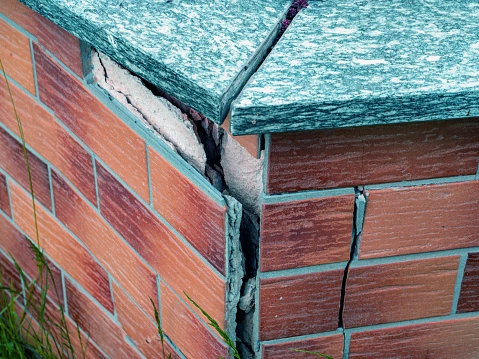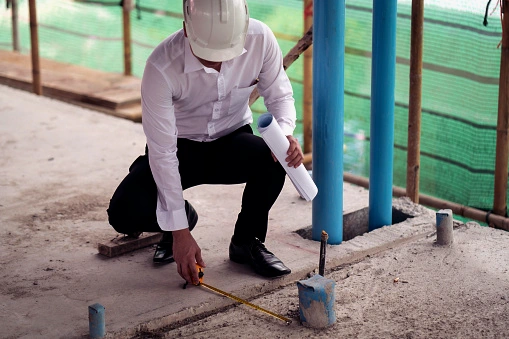Construction defects are a property owner’s worst nightmare in New York. While not all flaws are dangerous, some can have serious consequences. Dangerous construction flaws endanger occupants and even the structure itself. Most types of construction defects are not discovered immediately and are only discovered after the project has been completed. Whether the defect is minor or major, it remains a problem, and defending against defect claims is difficult.
Construction defects in New York are errors in the construction process caused by materials, design, or poor workmanship. They cause failure in certain aspects of newly constructed buildings, which may cause financial or other damage to people or property. A construction defect can occur as a result of poor architectural design, poor construction, improper inspection, or a lack of planning or supervision. Construction defects in New York City occur when a building is not built in a reasonable and workmanlike manner.
A newly constructed home must have all of the following construction flaws:
- Deficiencies in the construction process result from poor materials, design, or workmanship.
- The deficiency must cause failure in the structure being built.
- The deficiency must cause financial or other damage to an individual or property.
A design flaw can be as simple as failing to meet the owner’s expectations or as serious as a structural flaw in the building. The severity and source of the prevailing issue will greatly influence the New York construction defect and the ensuing litigation.
Main Classes of Construction Defects in New York
In New York City, construction defects are classified as either latent or patent. Patent flaws are those that are easily detectable through reasonable inspection. These are the types of new construction flaws that a contractor or subcontractor might discover during routine inspections. They are obvious, which means they are frequently simple to repair. Most of these construction defects in New York City are merely cosmetic, and accessing and repairing them is not invasive on the surface.
Latent defects are difficult to detect through reasonable inspections because they are concealed and not readily visible. They are more problematic because they are not obvious and are usually below the surface or even in the project’s guts. For example, foundation problems may not be apparent for several years after completion and are only discovered when settlement causes cracks in the building. When latent defects become visible, they are classified as latent rather than patent. Even if the work is thoroughly inspected, latent defects may go undetected.
Main Categories of Construction defects in New York
The cause of New York construction defects can be deficiencies in the actual product and how the design is installed, operated, and maintained. Some damage, such as a leaking water pipe, might be instantly apparent or be discovered over time, such as a foundation movement. When construction defect allegations are raised, it is best to understand the potential failure mechanisms from products, installation, and design to operation and maintenance.
Design Deficiencies
A design defect occurs when a design professional fails to create well-organized and accurate construction documents, resulting in an error or omission. An error requires either a replacement or a redesign of a part. An omission can be solved through change orders, thus adding the scope of work for a contractor. Typical design defects are poor drainage, inadequate structural support, or flawed roof designs that lead to water intrusion.
Material Deficiencies
Material defects are those that arise due to damaged or defective building materials. If the defect emanates from the manufacturer, the parties using the materials are unlikely to notice the defect until after they have already incorporated them into the project. These construction defects are particularly costly since they might require new materials and additional labor. Examples include inferior products that are not durable and window frames bent during transit that cannot be installed appropriately, leading to water penetration.
Workmanship Deficiencies
Many people think of workmanship defects when they think of New York construction defects. These types of construction defects occur as a result of the contractor’s failure to build a part or structure in accordance with the construction documents. Workmanship defects include structural integrity issues and simple aesthetic issues. It is extremely difficult to assign liability and determine who or how the culpable party failed to meet the property standard of care.
Construction Deficiencies
Construction flaws are closely related to workmanship flaws and are frequently the result of failing to build a house in a rationally workmanlike manner. They result in construction failure due to poor workmanship and the structure failing to perform as intended by the owner. Improper plumbing work, for example, can cause leaks that can damage electrical wires in the wall or promote mold growth. The structural integrity of the building, mechanical elements, doors and windows, expansive soil, water intrusion, electrical defects, toxic mold, moisture protection, and finishes are some other examples.
Operational and Maintenance Deficiencies
These flaws occur when the owner fails to properly maintain the structure or systems. In the winter, for example, the temperature of an HVAV system may be kept too low, causing the popes to freeze. Failure to maintain the exterior sealant, for example, causes it to break down and allow water in.
Subsurface Deficiencies
Many parts of the country, including New York, have expansive soil conditions. Some structures are constructed in areas where a stable foundation is difficult to obtain due to shifting soil or hills. Cracked foundations and other structural damage can result from a lack of solid foundations. Subsurface conditions that have not been properly prepared and compacted for adequate drainage may result in issues such as failure to settle properly to the ground, flooding, shifting, or moving structures.
Common Types of Construction Defects in New York
Some of the most prevalent, high-cost New York construction defects include:
1. Structural Defects
If the structure of a building is somehow defective, then there might be a great danger in occupying the home. It might be unstable or unsafe and may not function as intended or designed. Structural issues include improperly installed doors, weak wood for studs, defective or weak flooring, dry rot, drywall problems, etc.
2. Water Leakage
Water leaks can cause a variety of serious problems in a home or commercial property. Water has a tendency to seep through poorly installed doors, windows, and basements. Water leaks are a concern in many areas of the property, including the drywall. Mold growth is the most serious problem caused by water leakage. When black mold grows, the building may become completely unsafe to live in. Repairing the damage caused by a mold infestation is usually extremely expensive.
3. Plumbing Defects
If the plumbing work is improperly installed, then it might leak. Although the damage from a broken water pipe is severe, the damage that can be far worse is if any of the sewer pipes break. The cost of repairing plumbing issues can quickly escalate, but the contractor must bear the cost of the defective plumbing.
4. Drainage Issues
The land is prepared before construction begins, and there is a specific type of preparation for the land for construction. Failure to prepare or incorrect preparation may result in water accumulation on the property, destroying the new building. Drainage problems can be expensive to repair.
5. Defective Concrete Work
Concrete construction is difficult work that necessitates a high level of expertise. Inadequately prepared or poured concrete can look terrible and usually crack. It can also fail to support any significant weight without collapsing, making it structurally unsafe. In most cases, the only way to fix poor concrete work is to completely replace it.
6. Soil Settlement Issues
To avoid settlement, the soil at the site must be properly prepared before laying the foundation for a new building. Settlement can cause significant damage to a construction structure, necessitating significant effort and financial resources to complete the necessary repairs.

The Litigation Process for a Construction Defect
Construction defect cases in New York City are quite complex and challenging to deal with. They deal with issues related to engineering, materials, design, workmanship, and more. These cases often arise when the project is completed or in the final stages when the construction defects become visible, thus increasing the damage. Quantifying and resolving the New York construction defects becomes difficult as the parties blame each other and fail to devise an amicable solution. It is difficult to determine the entire range of resulting damages or the responsible party, and that is where the law comes in.
Pursuing the legal process of construction defect repairs can be complicated, time-consuming, and technical. In New York, you can pursue claims against the design professional, contractor, subcontractor, and insurance company. Once you have figured out the responsible parties, knowing the best way to deal with them is challenging. Therefore, you will need to schedule an appointment with a New York attorney to provide you with the best advice and guidance for resolving the matter.
When you notice a construction defect on your structure, you will have the grounds to pursue a lawsuit against the developer, subcontractor, builder, designer, engineers, architects, and suppliers. The most probable causes of action might include negligence, breach of contract, strict liability, fraud, negligent misrepresentation, and breach of warranty. You may decide to go to mediation, where a neutral third party will attempt to come up with a mutual resolution and settlement of the claims to save legal fees. Alternatively, you can go for arbitration, where an arbitrator acts as a judge, and the arbitration results are usually binding and cannot be reversed by any appeal.
Negligence
Law requires developers, contractors, engineers, architects, and subcontractors to use reasonable care during the construction process. If it is proven that the developer violated their professional standards, they may be held liable. You may be able to show that they lacked the necessary knowledge to do the job, such as a proper degree or license, but were still hired by their company. In such a case, the company may be held liable for the developer’s actions.
Future purchasers of the property are also protected because the duty of care extends to anyone who is harmed as a result of the construction defect. If a legal issue arises ten years later, the original builder of a building may still be in trouble. General contractors and developers are liable for the negligence of subcontractors.
Breach of Contract
Property owners have the right to sue developers or builders if they fail to meet the terms of their contracts. This action may be taken if a contractual obligation is violated, the purchase or sale documentation is violated, or escrow instructions are not followed. When such allegations are made, the court frequently refers to the doctrine of substantial performance. It will consider the contract completed if the builder made every effort to complete it, even if they did not meet all of the requirements. The property owner will be required to pay the contract amount less the property’s diminished value.
Breach of Warranty
A breach of warranty is similar to a breach of contract in that it occurs when the warranty is not followed. Some contracts include warranties that cover the condition of the property in the event of faulty products. An example is a warranty that states that an HVAC system will operate efficiently for ten years. If the system fails after five years, the construction company is required to honor its warranty by replacing the broken item. When structural damage is caused by an express warranty breach, the principles of a contract apply.
Strict Liability Claims
The implied warranty of habitability binds the general contractor to strict liability or responsibility. The property owner is not required to demonstrate that the developer or general contractor was negligent during construction. The only things they have to prove are that the house has a defect, that the developer created or caused the defect, and that the defect caused injury or damage. When the developer is involved in the mass production of houses, the homeowner should also provide proof.
Fraud
When a developer or contractor knowingly misrepresents the quality of construction, this is considered fraud. It involves making false and misleading statements, such as claiming a floor is scratch-proof when it is easily scratched. It could also apply when someone impersonates a contractor or when the contractor hires someone else to do the work. Your lawyers must demonstrate in court that the contractor did not intend to follow the specifications and design plans as promised.
Negligent Misrepresentation
In a negligent misrepresentation case, as a homeowner, you must demonstrate that the developer made an allegation to you with no reason to believe the authenticity of the information provided. The developer, for example, may claim that their roofing will never leak. When it leaks, the homeowner is irritated, and the developer has no evidence to back up his claim.
How Construction Defect Litigation Works
The most serious issue in construction defect cases is the amount of litigation involved. Construction defect litigation is unlike any other type of construction litigation in that it is expensive, complex, and time-consuming. Depending on the defect, the lawsuit may involve a large number of defendants, such as anti-indemnity statutes, various insurance policy coverages, and extensive fact discovery procedures. To win a construction defect lawsuit in New York, you will need the help of an experienced attorney.
Determining the Damages
The party sued on construction defect allegations must not only pay to defend themselves but may also be liable for any damages. The extent of damages is especially difficult to determine because several factors may influence the award. The extent of the damage is one difficult factor to determine. When recklessness and gross negligence are involved, the court can include the cost of repairs, loss of use, property value decline, and punitive damages. When multiple defendants are involved, the courts must also decide how to distribute liability.
Timeline of a Construction Defect Lawsuit
Another issue for construction defect litigation is time, as most New York construction defects are discovered years after the work is completed. When the defect is discovered, the state’s statute will determine whether or not a lawsuit can be filed. In New York, a construction defect lawsuit can be filed within six years of the project’s completion. The timeline varies by state and can range from 4 to 20 years.
Seek Advice from Construction Defect Attorneys in New York
If your New York residential or commercial property has a legal construction defect, the responsible parties should bear the cost of repairs, not you. Gregory Spektor & Associates has highly experienced attorneys who are well-versed in construction defect litigation. In construction accident lawsuits, personal injury cases, premise liability claims, slip and fall cases, and other areas, we provide high-quality legal services and a friendly attorney-client relationship. Call us at (888) 797-7735 to schedule a free consultation with one of our attorneys.


